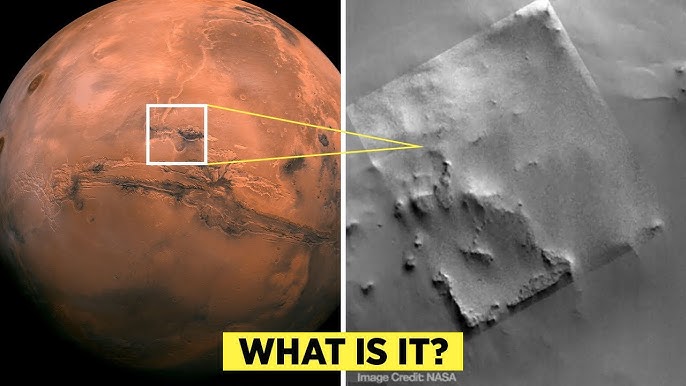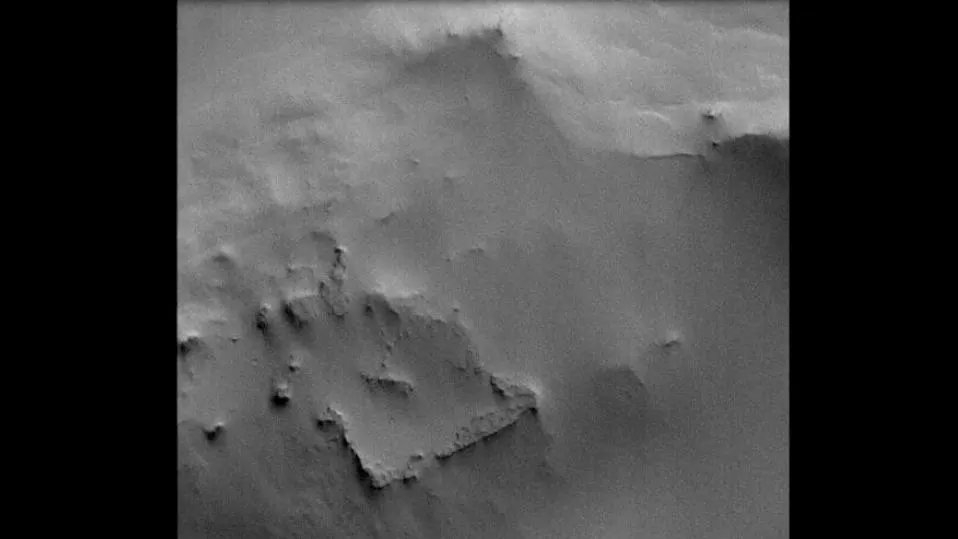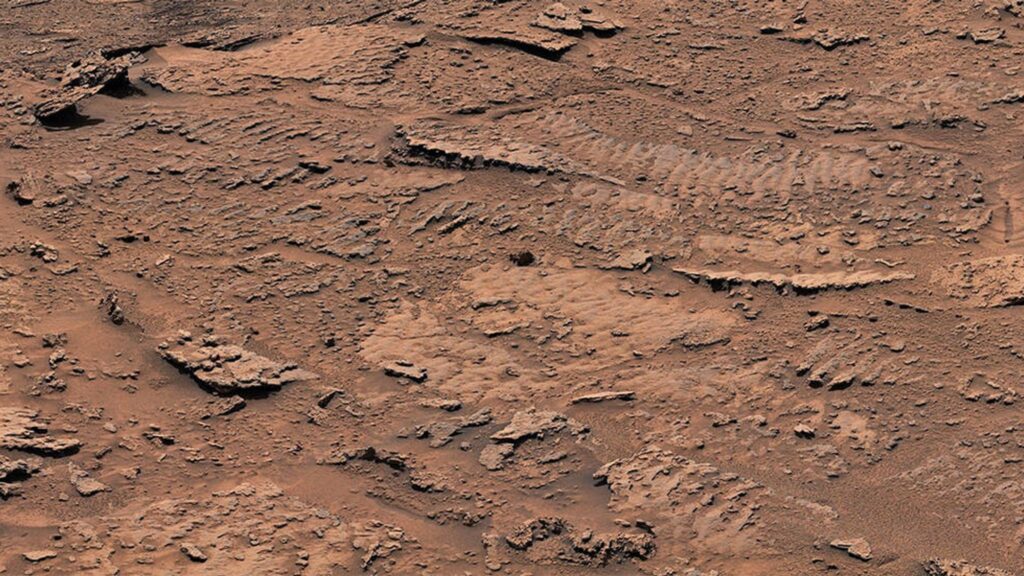The Mars Square: Natural Wonder or Ancient Artifact?
A strange, square-shaped formation on Mars has recently sparked a wave of excitement and speculation across the globe. Spanning about 3 kilometers wide, this geometric anomaly—dubbed the “Mars square”—was captured in images by NASA’s Mars Global Surveyor between 1997 and 2006. The discovery has ignited debates about its origins, with some even wondering if it could be a remnant of an ancient Martian civilization. Adding fuel to the fire, Elon Musk, the visionary CEO of SpaceX, has called for an investigation, urging humanity to send astronauts to explore this enigma. So, what exactly is the Mars square, and could it really point to a lost civilization on the Red Planet? Let’s explore the possibilities.

What Is the Mars Square?
The Mars square is a striking, near-perfect square formation etched into the Martian landscape. First spotted in high-resolution images from NASA’s Mars Global Surveyor, a spacecraft that orbited Mars from 1997 until 2006, this feature stands out due to its geometric precision. Some have compared its shape and scale to iconic Earth structures like the Great Pyramid of Giza, noting its steep slopes and defined edges. However, despite its intriguing appearance, the square’s true nature remains a mystery, leaving scientists and enthusiasts alike to ponder its origins.

Theories About Its Origin
Several competing explanations have emerged to account for this curious formation. Let’s break them down:
1. Natural Geological Formation
Mars is a planet shaped by a turbulent geological past, marked by volcanic eruptions, tectonic activity, and erosion. Natural processes can sometimes produce surprisingly geometric shapes—think of the hexagonal basalt columns of the Giant’s Causeway in Ireland or the Devils Tower in the United States. The Mars square could be the result of:
- Lava Cooling: As molten lava cools and contracts, it can form cracks that create regular patterns.
- Fault Lines: Tectonic stresses might have carved out a square-like structure over millions of years.
- Perspective: The square’s perfect appearance might be an illusion caused by the angle of the photograph or image processing, making it seem more precise than it actually is.

2. Artificial Structure
Could the Mars square be evidence of an ancient civilization? Some speculate that its symmetry is too exact to be a natural fluke, suggesting it might be the ruins of a Martian structure—perhaps a foundation, wall, or monument. Enthusiasts point to its size and shape as hints of intelligent design. Yet, this theory faces significant hurdles:
- Lack of Evidence: No artifacts, tools, or other signs of a civilization have been found on Mars.
- Past Debunkings: Similar claims—like the “Face on Mars” spotted in 1976—turned out to be optical illusions caused by shadows and low-resolution imaging. The Mars square might follow the same fate.
3. Pareidolia
Our brains are wired to recognize familiar patterns, a trait called pareidolia. This is why we see faces in clouds or animals in constellations. The Mars square could simply be a natural rock formation that, from a certain angle, looks square to human eyes. Without closer inspection, it’s possible we’re projecting meaning onto a random feature.
Elon Musk’s Call to Investigate
Elon Musk has thrown his weight behind the mystery, declaring, “We should send astronauts to Mars to investigate!” As the driving force behind SpaceX, Musk has long dreamed of colonizing Mars to make humanity a multi-planetary species. His ambitious Starship spacecraft is designed to carry humans to the Red Planet within the next decade, and the Mars square could be a perfect target for exploration.
Musk’s enthusiasm is infectious, but it’s worth considering his broader agenda. Highlighting the Mars square could rally public support and funding for his missions, while also tapping into humanity’s curiosity about life beyond Earth. Still, his call for investigation underscores a key point: we won’t know the truth until we get a closer look.
Could It Be an Ancient Civilization?
The idea of a lost Martian civilization is tantalizing, but the evidence—or lack thereof—suggests caution. Mars today is a cold, dry world with a thin atmosphere, but billions of years ago, it may have had liquid water and a thicker atmosphere, conditions that could have supported microbial life. However, there’s a big leap from simple life forms to a civilization capable of building structures like the Mars square.
Past “discoveries” on Mars, like the “Face on Mars” or the “Pyramid of Cydonia,” have fueled similar speculation, only to be explained as natural features under better scrutiny. The Mars square might be another example of our imagination running wild. That said, its geometric precision keeps the question alive: could it be more than just a rock?
The Future of Mars Exploration
The Mars square isn’t the first Martian mystery, and it won’t be the last. As technology advances, we’re poised to uncover more about the Red Planet. NASA’s Mars Reconnaissance Orbiter could provide higher-resolution images, while future rover missions—or even Musk’s astronaut expeditions—might visit the site directly. Each step brings us closer to answering the big question: are we alone in the universe?
Conclusion
The Mars square is a captivating puzzle that blends science, speculation, and human curiosity. Is it a natural formation sculpted by Mars’ ancient forces, or could it hint at something extraordinary—an echo of a civilization long gone? For now, there’s no definitive proof either way, and that’s part of its allure. Elon Musk’s push to investigate reflects our collective drive to explore the unknown, but we must approach this mystery with open minds and rigorous science.
What do you think? Is the Mars square just a trick of the eye, or could it rewrite our understanding of the cosmos? As we set our sights on Mars, one thing is clear: the Red Planet still holds secrets waiting to be uncovered.